Studio G3 opens an opportunity for a new desire for the life on the beach in Barcelona. The proposal will have to meet certain levels that will reveal a higher rate of a better habitat and environment along with justified needs for its habitants. The scientific facet of the project will have to be justified along the process while working simultaneously with the more architecture and structural needs. The Playland proposal targets the air pollution in Barcelona while creating a system that can interact with the residents through a series of uses that embody multiple daily activities and needs at the beach. The careful study of this process will follow.
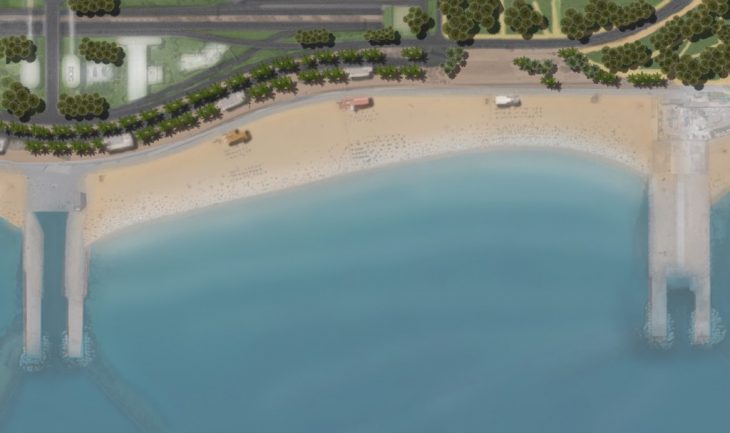
“According to the latest reports, Spain is one of the top five worst ozone polluters in the world, and one of the furthest away from meeting protocols on greenhouse gas emissions as set out by the Kyoto Agreement. In the Environmental Ministry Report released earlier this month. The worst offenders are Madrid, Seville, Valencia and Barcelona. In Barcelona, the biggest contribution to these alarming figures are a massive increase in CO2 (carbon dioxide) emissions produced from an influx of personal vehicles on the roads.” Streetdirectory.com
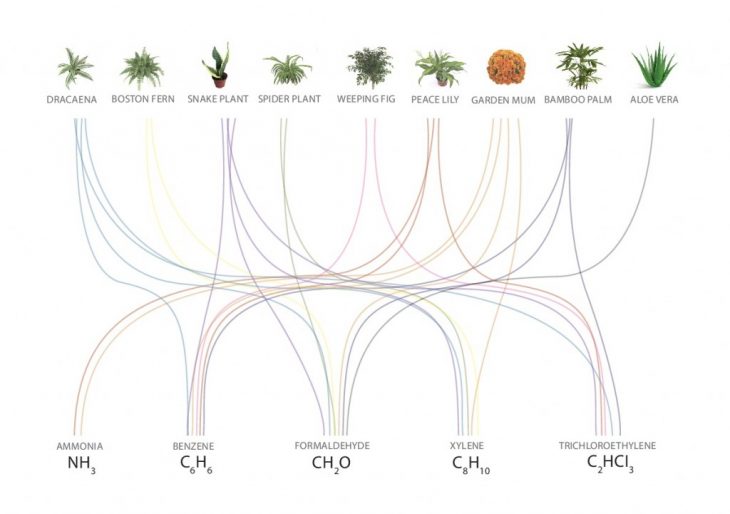
The group research the air pollutants in Barcelona that could be better eliminated by the purification plans here exemplified. Each plant has determinate body cells that work differently and accordingly with the pollutants identified, therefore some of the plants such as Aloe Vera or Boston Fern, Spider Plant or the Weeping Fig should be considered as a lower contribute for this process since these only contribute for the elimination of fewer pollutants. However plants such as Dracaena, Snake Plant, Peace Lily, Garden Mum and Bamboo Palm should be implemented in the project with more occurrence considering their stronger impact while eliminating the air pollutants.
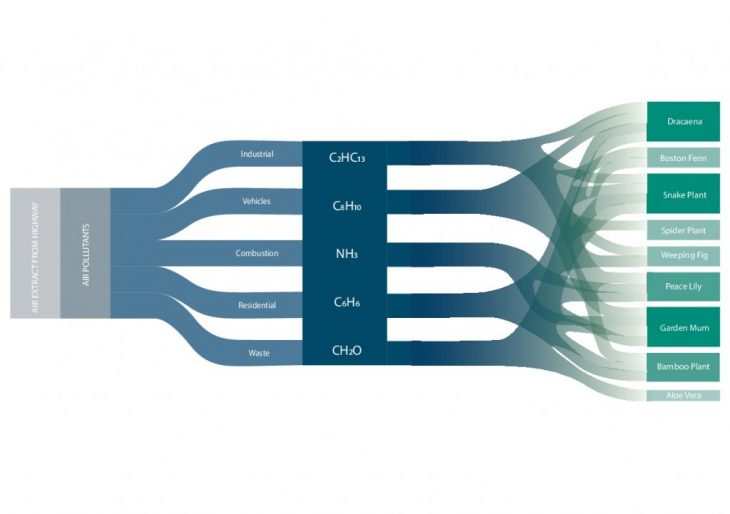
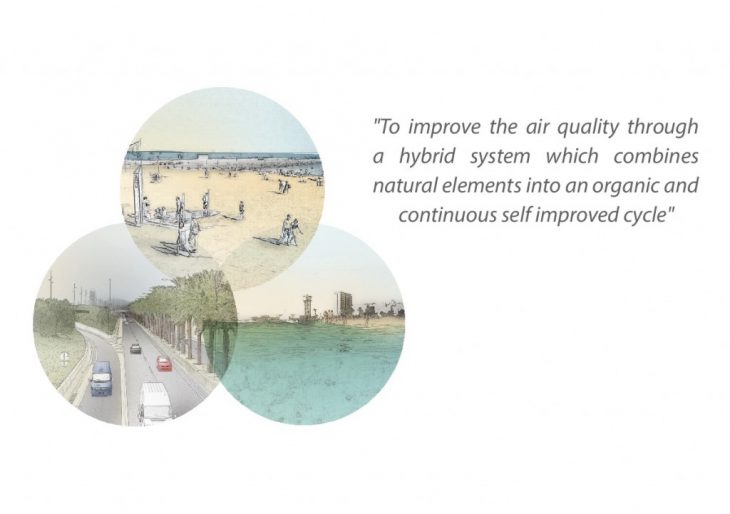
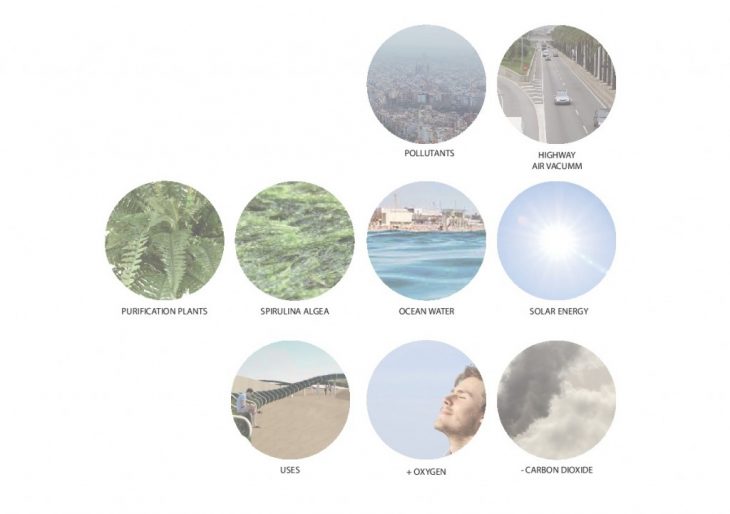
In Barcelona, just adjacent to the Bogatell Beach there is a long highway where the traffic is intense spreading major pollutants into the city, however, the proximity of the beach is a benefit to this situation since it can work as a source of water combined with solar energy. Such process starts from vacuuming the air from the highway through the bridge connecting to the beach with drilled pipes which will hold purification plants exemplified in the diagram, improving the quality for the air towards the beach. The pipes reach the beach forming a garden in the playground through a timber structure holding Aloe Vera in order to contribute for a continuous purification of the air. The following incorporates spirulina pipe system into the deep sea minimizing the carbon dioxide and improving the oxygen. Furthermore, the Spirulina Algae can also produce energy once combining solar energy and sea water allowing this improved air quality to evaporate into the city resulting into a continuous cycle of purification.
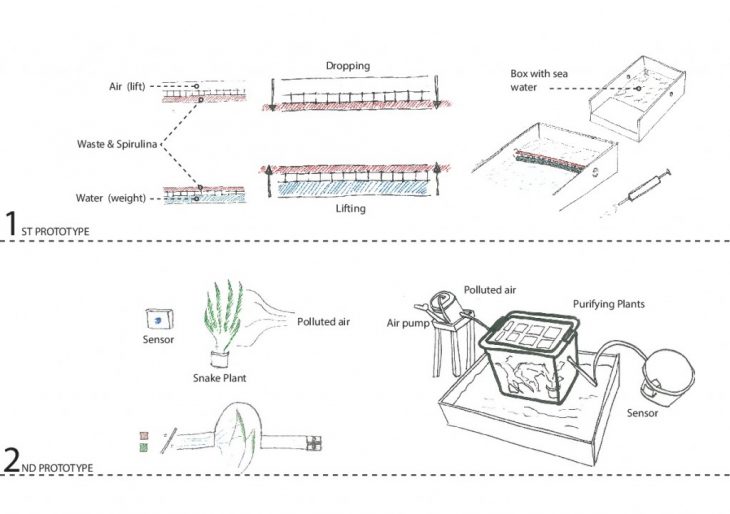
For the first prototype the team started from researching a technique to help purifying the polluted water on the beach through a pipe system that would work horizontally along the sea water around 30 meters from the coast. This system would incorporate two pipes: one with food waste from the restaurant nearby and spirulina algae, while the other pipe would work as moving mechanism of these organic matters. This last one would move the waste/algae up and down the sea water through a lifting and dropping system as shown in the diagram.
For the next prototype the concept of the system expanded into air pollution according with some research which stated Spain as one of the top 5 worst ozone polluters in the world as previously mentioned in the chapter: research. This mechanism aimed to test the purifying plants proved to eliminate certain air pollutants. The prototype was created through a large plastic box to work as a sealed environment for the plants named during research. This container connected on one side to a box filled with polluted air and other with a sensor that could test how the air is being purified through the plants.The air would be pumped out from the polluted container through he plant container and therefore towards the censored box. This prototype was unsuccessful because the power from the air pump was not enough considering the scale of the system and the box was proved to be not totally sealed.
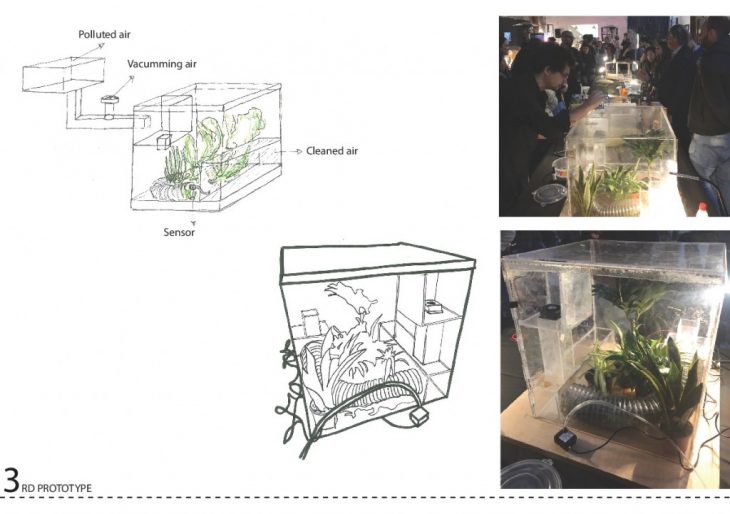
The mid term review took place on the 11th of November in the main hall and it was endorsed by external audience which is part of the IAAC faculty. For this presentation the team introduced a new prototype that was in process of being developed. The new system was made out of acrylic sheets laser cut in the fab lab to build a perfectly sealed box which will house the purifying plants in a consistent environment. The new prototype was to work alike the previous one, however with a simplified structure instead of having separate containers for each stage of the system as before. The whole structure is built with the acrylic sheets perfectly fitted incorporating also small isolated spaces within the box for the ventilation and access of the contaminated air and the cleaned air container after being tested by the sensors within. The comments from the board was to create a prototype that would reflect how the pipe would in reality as a section, and to state a better relationship with the highway and how this polluted air was being collected. Due some technologies missing at this stage, the prototype was not efficient in scientific matters and this considered major into the proposal. The invitation for more activity uses was also advised as in to justify the structure on the beach for a more diverse range of users and its needs.
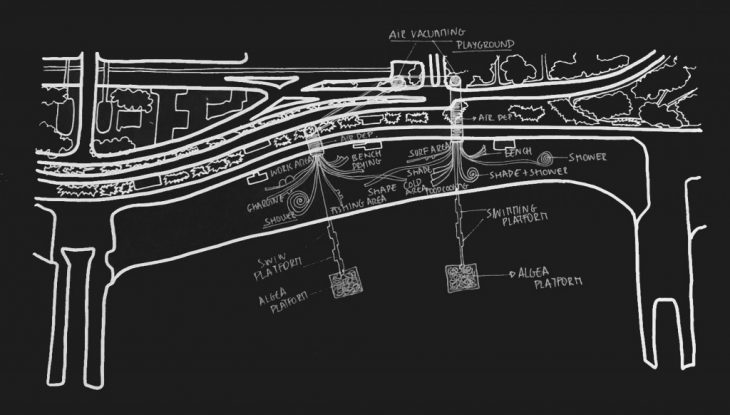
The idea on how to develop the structure in the site started to be developed at this stage, allocating each specific use and therefore organizing them in a conceptual order and understanding for the users.
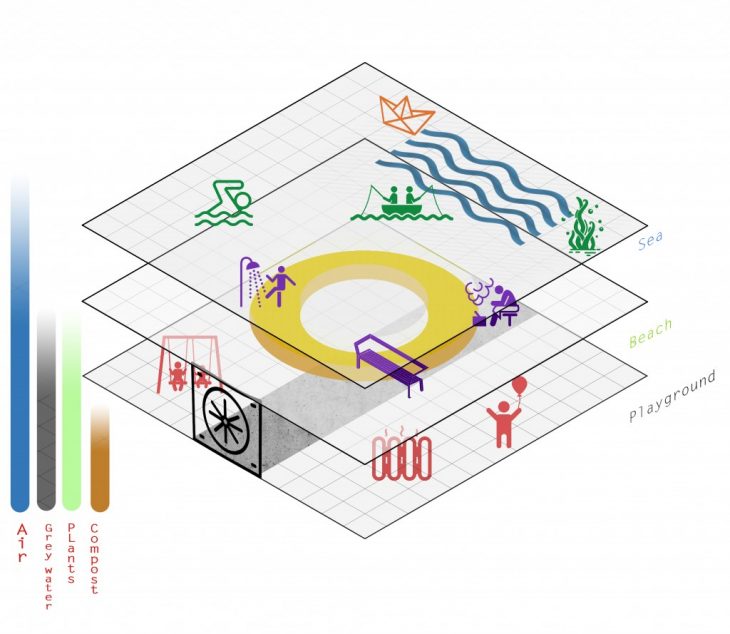
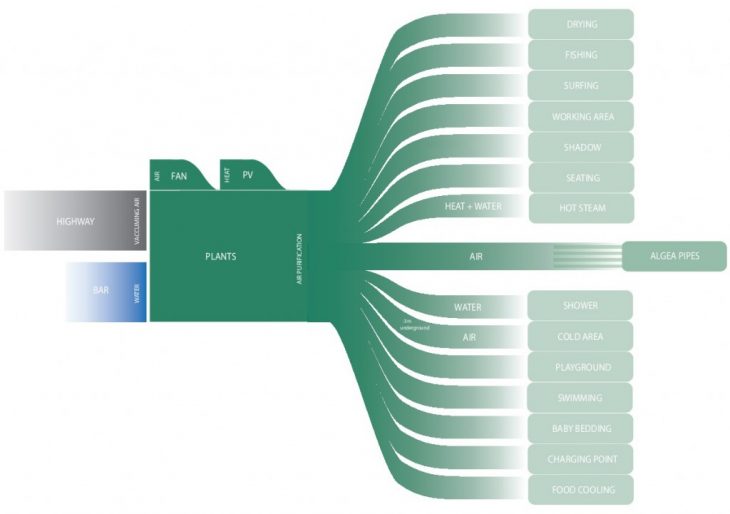
After the mid term review, the group started to develop mechanisms to add more uses for the structure considering the available resources that could be implemented to the pipe.
Frequent activities such as surfing and fishing were considered but other needs such as family comfort and working areas were thought to be a boost to the structure in order to be utilized in a larger community. Components such as heat, wind and water could release a larger range of benefits to the project such as hot steams utilizing water and heat, would be beneficial for the winter. According with previous records during the summer the Bogatell beach can become a very hot as risky place to be especially for infants, that so the development of baby bedding with shadow and cool streams were proposed along with a cold and refreshing area for all other ages during the summer heat. Along with this many other are explained in the following diagrams.
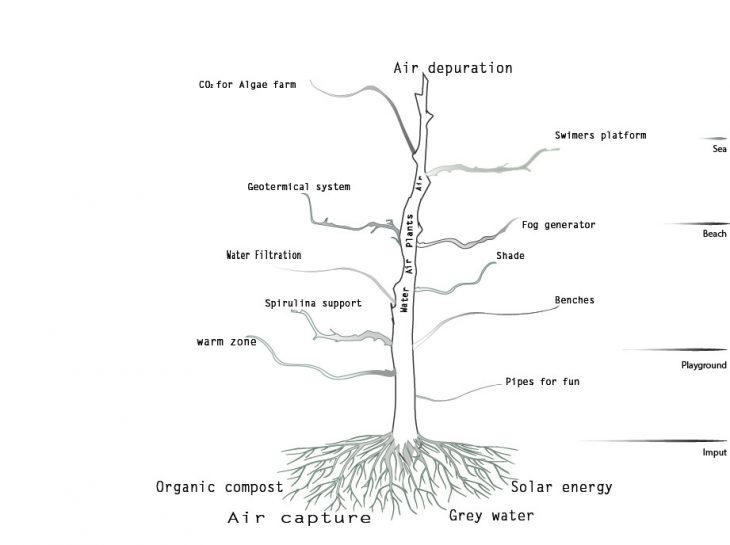
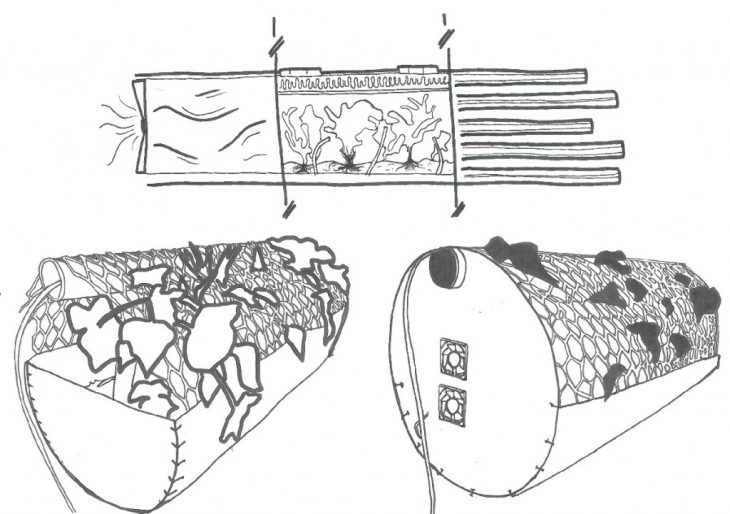
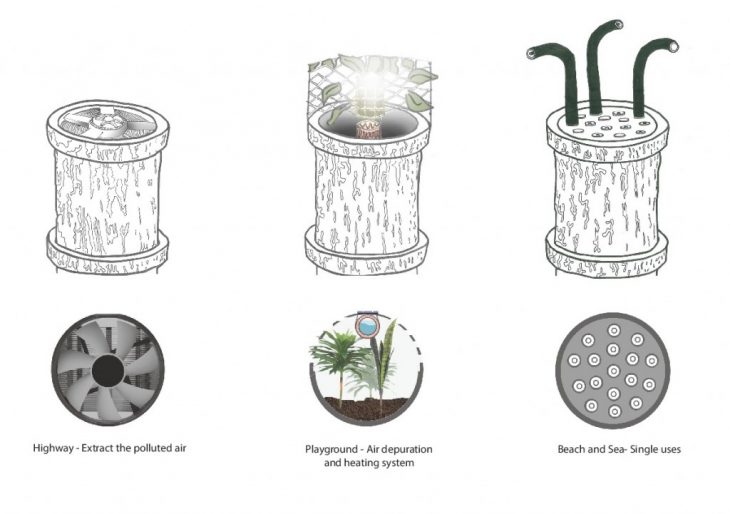
The final prototype will represent a section of the proposed structure for the beach, and therefore its different resources and mechanisms. The three major sections of the pipe system are represented at this stage, demonstrating how each process takes place and the properties adjacent to it.
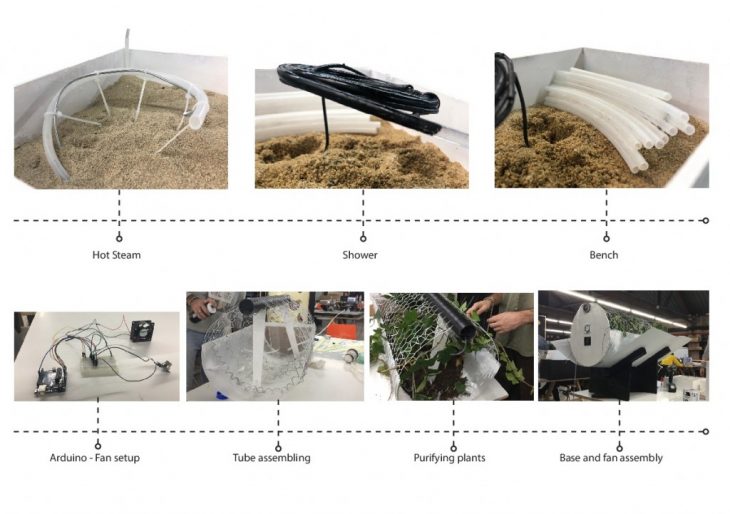
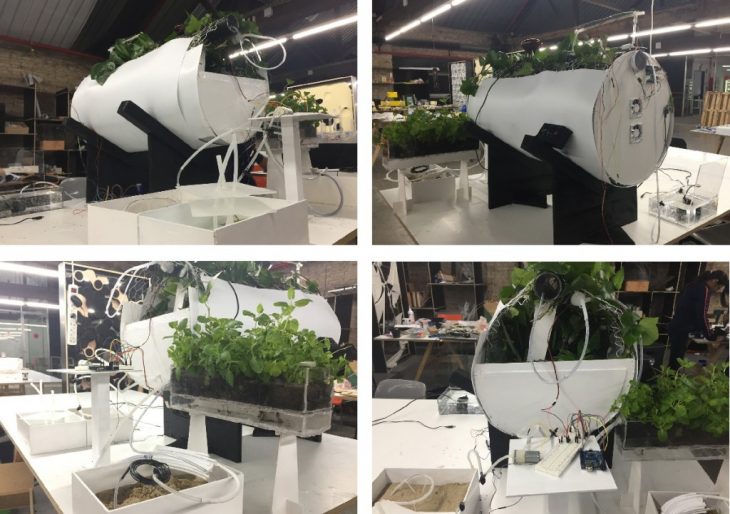
The proposal offers multiple uses for different proposes and activities that can take place at the beach. Targeting varied situations such as parenting, working, leisure or simply well being of the residents.
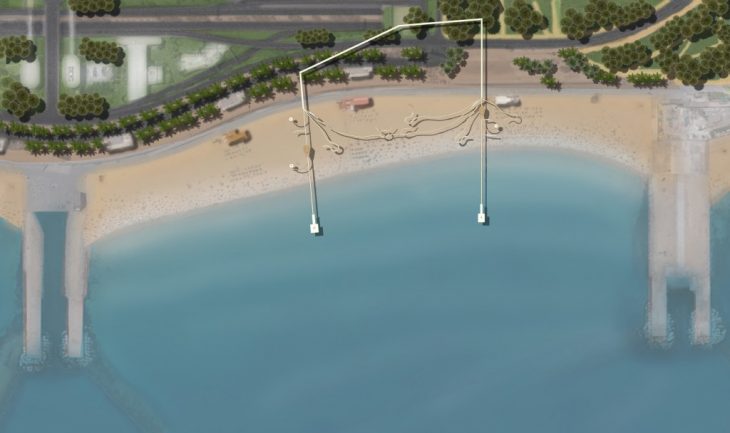
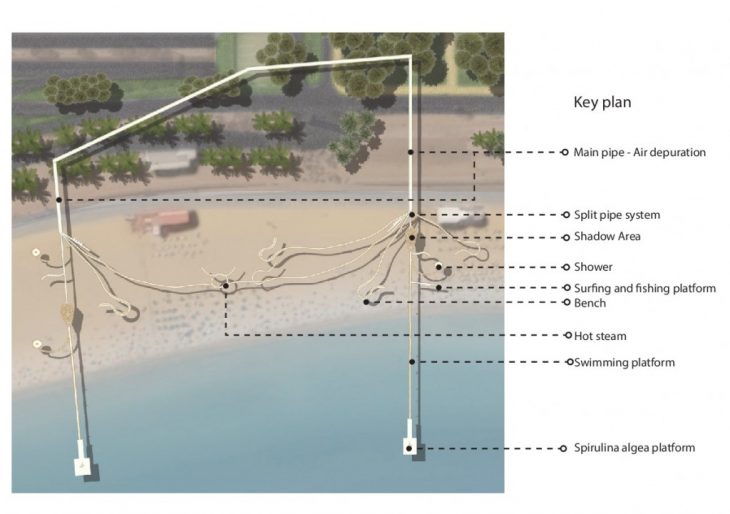
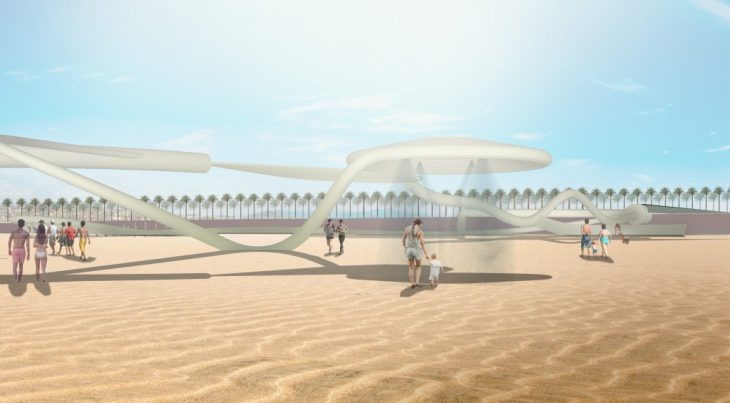
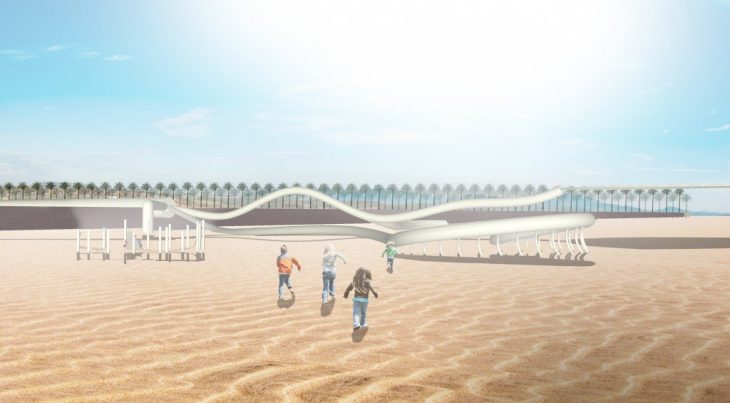
Renders of two beach ground views of the Playland proposal on the beach.
Prototype Production
</p>
.
.
.
.
Iaac – Institute of Advanced Architecture, Barcelona
Introductory Studio g3: Metabolic Beach
Introductory Studio g3: Metabolic Beach
.
.
.
.
Students:
Mert Gonul Nicola Colella Sofia Madeira Faculty: Javier Peña Oriol Carrasco Nikol Kirova
